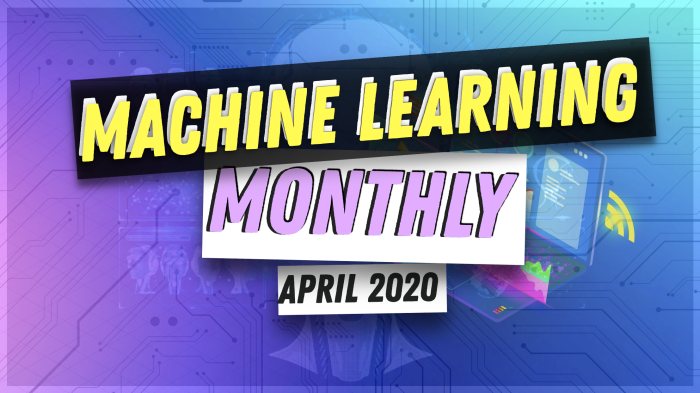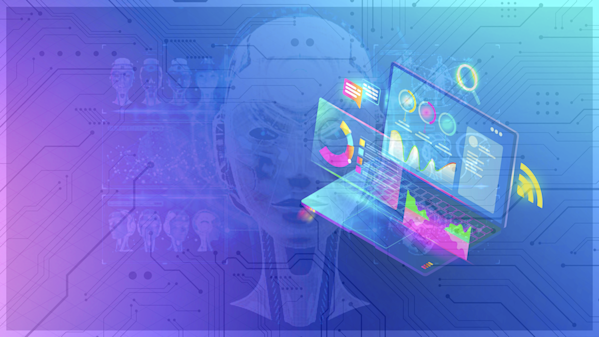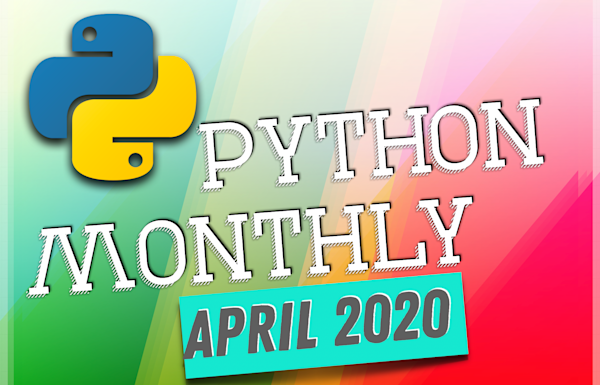4th issue! If you missed them, you can read the previous issues of the Machine Learning Monthly newsletter here.
Hey everyone! Daniel here, I'm 50% of the instructors behind the Complete Machine Learning and Data Science: Zero to Mastery course. I also write regularly about machine learning on my own blog as well as videos on the topic on YouTube.
Welcome to the 4th edition of Machine Learning Monthly. A 500ish word post detailing some of the most interesting things on machine learning I've found in the last month. If there is enough interest, I will keep doing these every month so please share it with your friends!
Since there's a lot going on, the utmost care has been taken to keep things to the point.
What you missed in April as a Machine Learning Engineer…
Python like you mean it: the perfect refresher or place to start
Let's face it, we could all be a little bit better at Python. Especially when it comes to machine learning.
Python Like You Mean It is a great free resource which covers all the essentials of Python and NumPy (the numerical Python library many machine learning paradigms are built on). Seasoned Pythonistas may find it a great revision but it'll be the most helpful to those who are newer to the language.
Save it for weekend learning or revision sessions.
ML Advice from Stanford's Computer Science Course
A great (and relatively short) lecture full of hands-on machine learning tips from Stanford's Computer Science Machine Learning module (CS229).
My favourites are:
- Step 2: Look at your data after every step.
- Step 5: Build a model (the simplest that works!).
AI for Medicine on Coursera: How can TensorFlow help healthcare?
In last months edition of the other newsletter I write, Eat, Move, Learn, Make, I posed the questions:
- What's not going to change?
- What's going to change?
What's not going to change is health. What's going to change is healthcare. And that change is going to come in the form of precision medicine. Using technology such as machine learning and artificial intelligence to aid in creating personalised healthcare solutions for every individual.
The new AI for Medicine specialization on Coursera (featuring TensorFlow) is a glimpse into what the future of healthcare may look like. The full course costs but you can check it out with a 7-day trial.
Microsoft's AI for good: Using AI for healthcare, climate change and education
The beautiful thing about AI and machine learning are the use cases which haven't been discovered yet. It's impossible to predict what they'll be or when they'll show up. But when the trends all show many smart people, large companies and large amounts of money going towards a field, you've got the perfect recipe for accidental discovery.
Microsoft's AI for good program aims to figure out ways to use AI to solve some of the world's most challenging problems such as health care, climate change and education.
Check out the causes. It's hard not to get excited. Maybe you'll start working on one.
Weights & Biases Benckmarks: Public experiments for some of the most challenging machine learning problems
I got my hands on Weights & Biases, a tool for tracking deep learning experiments, for the first time last month. And it's safe to say it will be a staple of my future projects.
After a little more exploring, it turns out it's far more than a tool keeping records.
For example, Weights & Biases Benchmarks brings together a central space for tracking large public experiments. Imagine getting the world's toughest machine learning challenges and putting them all in a collaborative space where you can see the experiments others have tried and build upon them.
My favourite is Drought Watch: predicting the severity of drought from satellite imagery and ground-level photos.
Why's it useful?
Imagine being able to use satellite imagery to find the best locations to grow certain crops of food around the world.
YouTube Originals: Age of A.I.
Brought to you by Ironman (Robert Downey Jr.), Age of A.I. explores how AI and machine learning are touching every single industry around the world.
I won't spoil anything but all I can say is even though I have some idea of how these technologies work (or at least think I do), the first episode still got my heart going.
MLOps: The marriage of machine learning and software engineering
If you're interested in building things with machine learning, you're probably going to start hearing this term a lot more.
So what is it?
I've said before machine learning and software engineering are merging. In other words, machine learning is becoming part of the software stack. If you're building an application which large numbers of people are going to use, chances are, machine learning will come into play at some stage.
With this being said, MLOps is currently the discipline of building machine learning pipelines. More specifically, systems which can take in data, manipulate data, model data, deploy findings from the data and update itself as necessary all at scale. A bit of a mouthful.
The exciting thing is, the rules of how all of this gets done are still being written.
How Docker Can Help You Become A More Effective Data Scientist by Hamel Husain
In light of the previous spiel on MLOps, if you're like me, most of your coding experience has been within a Jupyter Notebook. But the further along you get, you'll start to realise a model doesn't end its life in a Jupyter Notebook.
Docker is a tool which helps get the code you've written on your local machine running on another machine, say a cloud provided computer, in turn, helping other people access your code.
Docker is what I used to deploy my most recent machine learning app and make it accessible to others.
If you've never used Docker before, Husain's primer is a great place to start.
EfficientDet: The new benchmark in object detection
Watch out Detectron2, there's a new state of the art in object detection. And it's fast. Really fast.
EfficientDet (short for efficient detection) are Google's latest object detection models which get the same or better than the previous state of the art at 4x-9x the size using 14-32x less computation.
SOTAbench & paperwithcode: Where to go to find the latest machine learning research and best performing models
Looking for a code example of the model above? Chances are you'll find it on one of these two resources.
SOTAbench (state of the art benchmarks) and paperswithcode are two resources which should be in your machine learning bookmarks folder.
At paperswithcode you'll find the latest research papers (such as Google's EfficientDet) along with their code resources.
And at SOTAbench, you'll get to see which models are currently performing the best on a series of common machine learning benchmarks for computer vision and natural language processing.
Every time you're looking for the best model or latest code, check these two.
See you next month!
What a month. Easter and Coronavirus didn't manage to slow this field down.
If there's anything you think should be included in a future post, please let us know.
Liked something here? Which was your favourite? Let me know on Twitter.
In the meantime, stay safe, keep learning, keep creating.
See you next month,
Daniel www.mrdbourke.com | YouTube
By the way, I'm a full time instructor with Zero To Mastery Academy teaching people Machine Learning in the most efficient way possible. You can see a couple of our courses below or see all Zero To Mastery courses by visiting the courses page.






